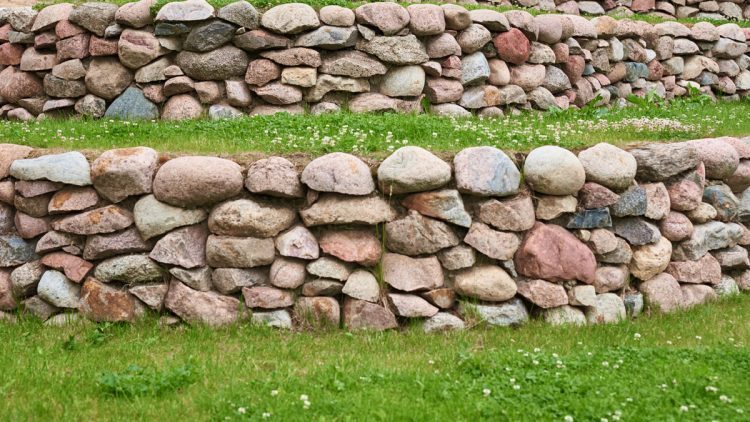What is a Retaining Wall?
A retaining wall is a network of construction materials that keeps or retains ground covering behind it. There are a lot of kinds of materials that can be utilized for creating retaining walls such as crushed rock, boulders concrete blocks, poured concrete, treated timbers or rocks. Some are easier to use, others have a restricted longevity, however, all can “retain” soil.
Gravity Wall or Geo-grid Reinforced Wall?
Several questions must be answered to build the appropriate type of retaining wall. For instance, is the soil clay, sand, or a mixture of the two? What lies above the wall: a driveway or something weightier such as a pool? Is the ground above or below the wall going to be even or inclined? What is going to be the height of the wall? All these aspects are going to determine if you will require a Gravity Retaining Wall or a Geo-grid Reinforced Retaining Wall.
Gravity retaining walls are ones that rely on their own mass and setback to hold back the material and are usually shorter in their height. Many retaining walls are perfect for this kind of wall, since they get stacked together, they lock together to create a setback. This setback assists the wall in supporting the pressures from the materials behind it.
Reinforced retaining walls are ones that utilize some kind of reinforcement to give more durability to the retaining wall itself, therefore improving its capacity to retain the materials behind it. Geogrid is placed between routes of blocks in the wall and rolled back into the incline or hillside throughout installation for creating a stronger and more balanced soil mass. Basically, the blocks, the geogrid and the reinforced material mass work together for making one large, heavy retaining wall framework. Oftentimes grid is not a functional solution on a project because of space or other site conditions, so optional reinforcement materials need to be utilized – like no-granular concrete, soil nails or ground anchors. These kinds of reinforcements usually require an outsourced engineer for design and a licensed contractor for the wall’s installation.
Types of Retaining Walls
In recent years a lot of different retaining walls textiles have helped renew the landscape in which we live. Typical retaining wall products can comprise of railway ties or treated timbers in addition to natural stones, wall stones, concrete blocks and bricks.
Whereas wood is often a low-cost and simple option for a retaining wall, its shorter longevity makes it a relatively substandard option. When the wood breaks down, your retaining wall and the strength of your available space do too. Rocks, stones, or boulders (or a combination of them) can create appealing retaining walls, however, the installation of these materials can be costly and laborious. Additionally, maintenance of stone walls can be challenging, because over time they could break down or become home to pests and invasive weeds.
Mortar or cast-in place retaining walls are another alternative. These walls can be installed with a multitude of flagstones, veneers, bricks, etc. which add consistency and style. Nevertheless, these structures are inflexible and don’t move and flex with environmental changes, monsoons and other natural forces, and can be very costly to build.

